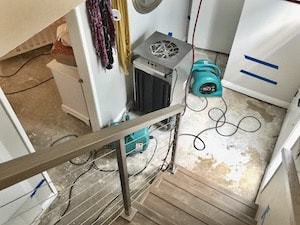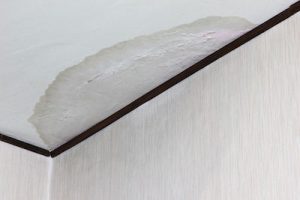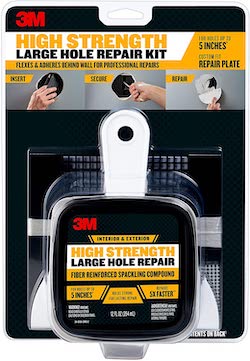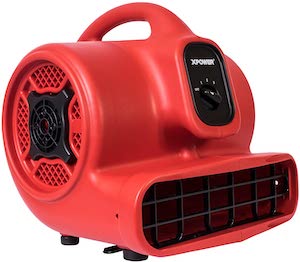I know that being a homeowner comes with a lot of responsibility. As a home owner I have had to deal with water damage in my home and have been through the whole process from start to finish. The process can be challenging. Identifying the problem immediately can save you a lot of headache down the road. If your home has water damage, here are a few things to take into account when identifying if it’s an emergency.
Is water damage an emergency? If the amount of water is causing structure or physical damage to your home then it is an emergency. When you do have significant water damage, it’s important to know what your next steps should be and who you need to contact for help with cleanup and restoration. Water damage doesn’t always constitute an emergency but is often one of those “if only I had done something” situations that keeps us up late at night worrying about how we’re going to handle things when disaster strikes!
Here are 9 Types of Water Damage Emergencies that need to be dealt with immediately.
- Busted Pipe
- Overflowed Toilet
- Leaking Roof
- Cracked Window
- Leaky Shower
- Leaky Bathtub
- Leaky Dishwasher
- Busted Sink Hose
- Leaky Refrigerator Hose
This process is a bit confusing, as there is more than one way to go about taking care of the repairs. Whether you are DIYing the repair or calling a disaster restoration company, knowing what to look for and who to contact about water damage to your home is key in repairing the water damage in a timely manner.
Here are Some Things to do when looking to repair the water damage in your home:
- Assess the amount of water damage
- How much will the water damage cost to repair?
- Will my home insurance pay to repair water damage?
- How do I get a quote for repairs on water damage in my home?
- Who can I contact for repairs on water damage in my home?
This process is a bit confusing, as there is more than one way to go about taking care of the repairs. Whether you are DIYing the repair or calling a disaster restoration company, knowing what to look for and who to contact about water damage to your home is key in repairing the water damage in a timely manner.
We have answers to these questions and more. Here is everything you need to know about water damage repair.
1. Assess the Amount of Water Damage and Assess if it Truly is an Emergency
When you find any water damage in your house, it is crucial to know the extent of the damage and to know what materials were affected by the damage. If you have a two-story house, a leak in the ceiling of the lower level can be indicative of water damage in the floor on the second level.
If you find water stains on the drywall in your home, there may be a leak directly above the wall, seeping through studs, baseboards, insulation and electrical fixtures. This can indicate very extensive internal damage to your home.
The drywall can easily be replaced, but replacing rotted studs in the wall can be a much more involved repair in need of professional help. Catching and repairing water damage early can save you a lot of headaches and money.
The longer you leave water damage, the larger and more detrimental the damage becomes. Mold and mildew can begin to develop as well, which is harmful to your health, and your children’s and pet’s health.
2. How Much Will the Emergency Water Damage Cost to Repair?
Based on where the water damage is in your house, the price tag on the repairs can be fairly inexpensive or a rather hefty purchase. The prices vary for floors, ceilings, drywall walls, bathrooms, and kitchens because of the different materials and accessibility of these materials.
Floors on the second level of your home with water damage can be a substantial repair with a large price tag. The work that is required to repair the floor may take up to five weeks to complete. The beams, plywood, and hardwood flooring needed to rebuild a second level floor are quite pricey as well.
Purchase a Wet Vac to Remove the water.
 Water Damage Ceiling Repair
Water Damage Ceiling Repair
Repairs to the ceiling are much more economic, usually amounting one fifth the cost of second level floor repairs. If the water damage on the second level floor causes the ceiling on the bottom level to leak or have water stains, you may be able to combine the repair and save money.
A small piece of drywall and some spackle may be the only things you need to repair the water damage to the ceiling. In this case, you may not need to hire anyone to repair, saving you even more money.
Repairing walls with water damage can be just as easy and inexpensive as the ceiling if the damage is contained within the drywall. You can also see our article on water proofing drywall to help prevent water damage. If the water has damaged anything deeper than that, such as studs and insulation, more material is needed to finish the repair. It may need some professional attention as well just to be sure the structure of the house has not been compromised by the damage. A drywall kit can help with repairing minor drywall issues.
 Water Damage Carpet Dry Out
Water Damage Carpet Dry Out
One of the most expensive repairs is drying out carpeting that has been soaked through by sudden water damage from an overflowing toilet or burst pipe. Not only do you have to pull the carpet up from the foundation, but you have to separate the pad found between the carpet and foundation from the carpet itself.
Bathrooms and kitchens with water damage are extremely precarious to try and price with generalizations. Every bathroom and kitchen is different and with so many fixtures and appliances in such a small portion of the house, the work required to repair the damage can be extensive and costly.
Damage behind a tiled surface or tub can warrant a complete retiling of the entire surface after the damage underneath is repaired.
A High Volume fan will be needed to dry out the affected areas.
 3. Will my homeowner’s insurance pay to repair the Emergency Water Damage?
3. Will my homeowner’s insurance pay to repair the Emergency Water Damage?
Homeowner’s insurance is a strange thing. There are so many things that can happen to your home that are under and out of your control and not all of those things are covered under your homeowner’s insurance.
Water damage is no exception to this phenomenon. Sudden water damage, such as overflowing toilets, pipes bursting, and water or sewer backups. Any water damage that is due to neglect or lack of maintenance will not be covered under most circumstances.
Home insurance coverage for water damage from storms or floods is a mixed bag. Some insurance providers lump this type of water damage into the same category as sewer backups and other sudden water damage. Certain insurance providers offer it as a separate plan along with other “acts of God.”
A good rule of thumb to follow is, “if it just happened, it’s covered. If it’s been a while, it probably isn’t covered.” Ask your homeowner’s insurance provider what types of water damage they cover to find out whether the water damage in your home is covered.
Even if it isn’t covered, call a disaster restoration company to come out and give you a quote on the repair.
4. How Can I Get a Quote for Repairs on Emergency Water Damage in My Home?
Getting a quote on repairing the water damage in your home can come from a few different places. These places are restoration companies and insurance adjusters. Both ways will give you similar estimates, but a restoration company can give you a plan of action along with the quote for repairs.
Most disaster restoration companies are filled with highly skilled and experienced individuals who can tackle the hardest water damage repair projects. They can give you a quote for repairing any amount of water damage as well as talk you through the process of repairing the damage and getting your home back to its original state.
An insurance adjuster is sent out by your insurance agency to assess the damage and determine what is and is not covered under your insurance policy. This will give you an estimate of how much it would cost to repair, and do the math to find out how much of that cost is coming out of your pocket.
In order to complete the process, you need to talk to both the insurance adjuster and the disaster restoration company. If you only get the disaster company involved, the cost for repairs comes completely out of your pocket. If you don’t get a disaster restoration company to give you a quote, your home may never get repaired, and you don’t want that.
 5. Who Can I Contact for Repairs on Emergency Water Damage in My Home?
5. Who Can I Contact for Repairs on Emergency Water Damage in My Home?
As stated earlier in this article, if your home has water damage, it’s time to call a disaster restoration company. There are many companies that specialize in repairing water damage or restoring bathrooms. Whatever repairs you have need of, there is a restoration company to take care of it. Depending on the extent of the damage you can also contact a residential general contractor and a bathroom remodel and resurfacing company.
If you find signs of water damage in your home, do not hesitate to call for an expert opinion and quote on the repairs. From there, your homeowner’s insurance agency can be contacted to find out what portion of the damage is covered under the home owners policy.
Once the restoration company and insurance agency are looped in and the proper steps have been taken. It’s time for the disaster restoration company to come in and tear out the damaged wood, tile, drywall, and fixtures in order to repair the water damage. They’ll then need to do all of the repairs to rebuild your home and then finish your baseboards, trim work and painting the walls.
WILL MY HOMEOWNERS INSURANCE COVER WATER DAMAGE IN MY HOME?
Sudden water damage, such as overflowing toilets, pipes bursting, and water or sewer backups are typically covered. Any water damage that is due to neglect or lack of maintenance will not be covered under most circumstances.
HOW DO I GET A QUOTE FOR WATER DAMAGE REPAIR?
Getting a quote on repairing the water damage in your home can come from a few different places. These places are restoration companies and insurance adjusters. Both ways will give you similar estimates, but a restoration company can give you a plan of action along with the quote for repairs.
HOW DO I KNOW HOW EXTENSIVE THE WATER DAMAGE IS?
If you find water stains on the drywall in your home, there may be a leak directly above the wall, seeping through studs, insulation and electrical fixtures. This can indicate very extensive internal damage to your home.




